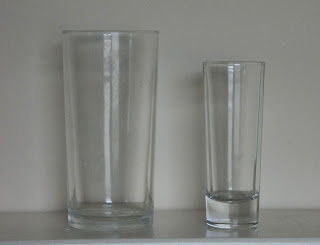 |
| Just a little idea of the weather this morning as I worked in the cutting garden, a good scattering of hailstones! |
I think flowers look beautiful in any form of containment, be it a vase, a specimen dome, floating on water or in ice. The different ways of containing flowers in the home provides a perfect way of looking at them more closely and in greater detail to appreciate each individual bloom's beauty.
Placing flowers in ice is the ultimate in suspended animation and adds an extra bit of magic and drama to a flower. Edible flowers can be used in ice cubes for drinks or you can use almost any other flowers in ice for decoration alone.
When I think about flowers in ice the ‘usual suspects’ come to mind, that is to say, borage and anchusa, frozen in cubes, they are both edible and ready and waiting for a Pimms or a G&T.
Of course if you wanted to use the ice cubes for a beautiful ice bucket for those party drinks or around a bowl of ice cream to keep it chilled you could use any flowers and let your imagination go wild. Perhaps just white flowers for a white wine bucket, pink for Rose wine, blue for the classic tipple, 'Blue Nun' (do they still sell this?) and so forth.
Potential ice cubes for a white wine bucket
This one is my favourite. It's a double white love-in-a-mist. The clarity through the ice is lovely especially the green fern like collar of the flower showing clearly and slightly protruding from the ice, magical!
The Rose wine bucket?
 |
| Zinnia |
 | |||
| Zinnia and astrantia in perfect suspended animation in the ice |
And the 'Blue Nun' bucket
 |
| Cornflower, ageratum and delphinium |
The other ice flower items I like to make are shot glasses. Very easy, all you need are two glasses of similar shape, one larger than the other. Then place a small amount of water in the larger glass, place it upright in the freezer and let it freeze. Then bring it out and place the smaller shot glass inside. Arrange flowers in the space between the glasses, don't be too precious about how you arrange the flowers at this stage as they will move around when you pour the water in and 'happy accident' are usually always the best! Gently pour in water in between the glasses and freeze (you may have to put a weight in the smaller glass to prevent it floating up).
Hey presto ...
 |
| This one is exquisite and the ice gives the nigella an ethereal, ghostly quality, even the 'veins' on the petals are visible. |
Go on, embrace the chill with added flowers!

















































